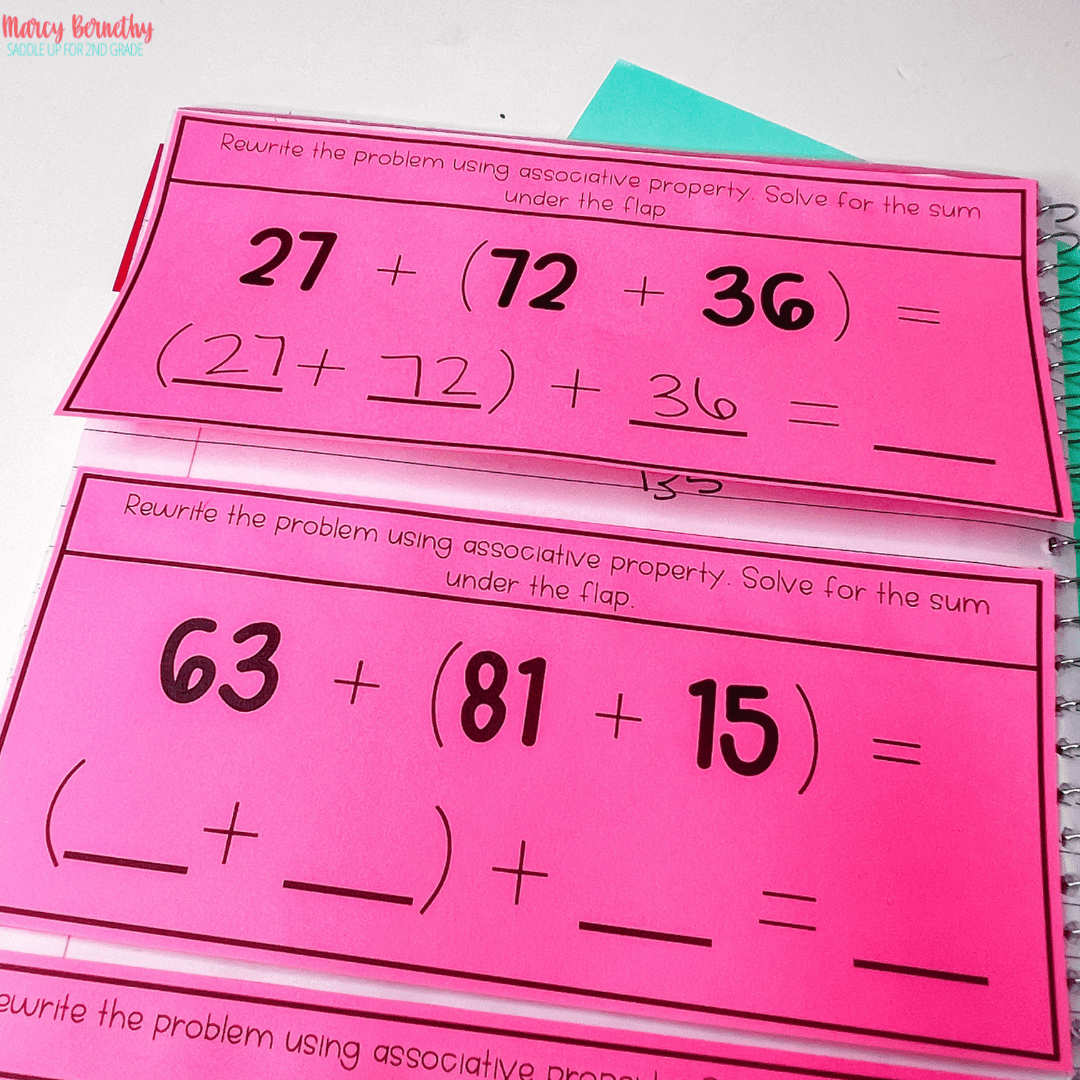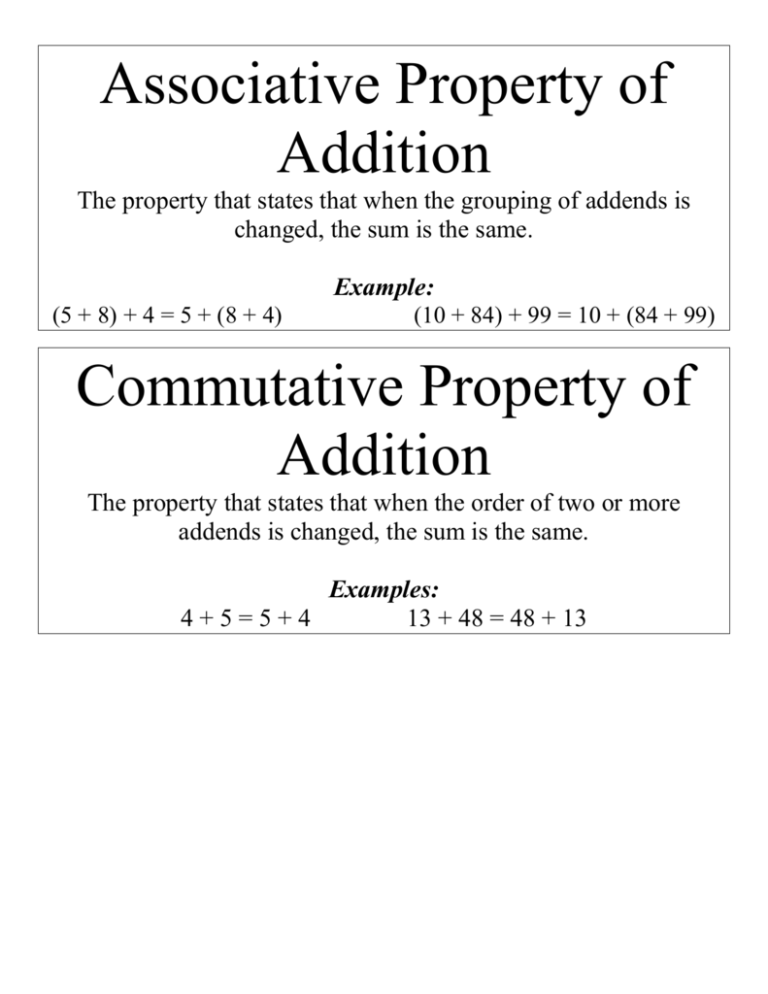What Is Associative Properties Of Addition WEB Definition Associative Properties Associative Property of Addition if a b and c are real numbers then a b c a b c Associative Property of Multiplication if a b and c are real numbers then a b c a b c
WEB Jan 24 2024 0183 32 The associative property of addition states that the sum of three or more numbers will always remain the same regardless of how the numbers are grouped But what is grouping and how does it work Let s break it down WEB Associative property explains that the addition and multiplication of numbers are possible regardless of how they are grouped By grouping we mean the numbers which are given inside the parenthesis Suppose you are
What Is Associative Properties Of Addition
 What Is Associative Properties Of Addition
What Is Associative Properties Of Addition
https://saddleupfor2ndgrade.com/wp-content/uploads/2022/09/Associative-Properties-of-Addition-Math-Journal.png
WEB Jul 23 2023 0183 32 In mathematics the associative property means that when three or more numbers are added or multiplied the grouping of numbers without changing their order does not change the result Formally for any numbers a b and c the associative property is defined as follows Addition a b c a b c Multiplication a b
Templates are pre-designed files or files that can be utilized for various purposes. They can conserve time and effort by providing a ready-made format and layout for creating different type of content. Templates can be used for individual or expert tasks, such as resumes, invites, leaflets, newsletters, reports, discussions, and more.
What Is Associative Properties Of Addition

Use Properties Of Addition Lesson 6 10 YouTube Properties Of

The Associative Property Of Addition Explained YouTube

Elementary Math Definitions Addition Subtraction Concepts Associative

Question Video The Associative Property Of Addition And Multiplication

Associative Property Of Multiplication Worksheet 3rd Grade Free Printable

Associative Property Of Addition YouTube

https://www.math.net/associative-property-of-addition
WEB The associative property of addition states that how the numbers in an addition problem are grouped doesn t change the sum Given that a b and c are addends in an addition problem it doesnt matter whether a and b are grouped together and added first or if b and c are grouped together and added first

https://www.cuemath.com/numbers/associative-property-of-addition
WEB The associative property of addition states that the sum of three or more numbers does not change no matter how they are grouped Learn more about the associative property of addition with concepts definitions and examples

https://www.khanacademy.org//properties-of-addition
WEB Here s a quick summary of these properties Commutative property of addition Changing the order of addends does not change the sum For example 4 2 2 4 Associative property of addition Changing the grouping of addends does not change the sum For example 2 3 4 2 3 4

https://mathmonks.com/associative-property/
WEB Aug 3 2023 0183 32 The associative property of addition states that the sum of 3 or more numbers provides the same result regardless of how they are grouped It can be best understood using colored blocks For any three numbers a b and c the formula is Associative Property of Addition

https://math.libretexts.org/Bookshelves/Applied
WEB The Associative Properties of Addition and Multiplication The associative property of addition states that numbers in an addition expression can be grouped in different ways without changing the sum
WEB Associative Property of Addition Associative property for addition implies that regardless of how numbers are grouped the final sum of the numbers will remain the same This can be expressed as x y z x y z WEB There are three main properties of addition the Associative property the Commutative property and the Identity property of addition Each property has its own features which help in making calculations easier
WEB Use the associative law of addition to write the expression We have a 77 plus 2 in parentheses plus 3 in a different way Simplify both expressions to show they have identical results